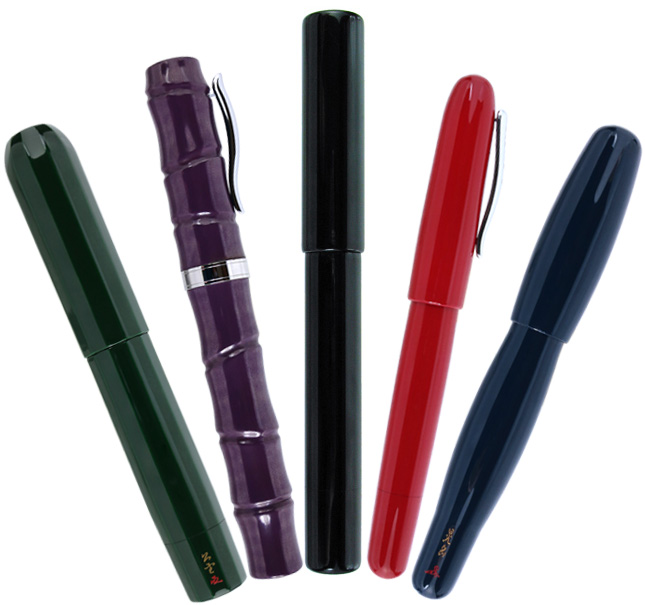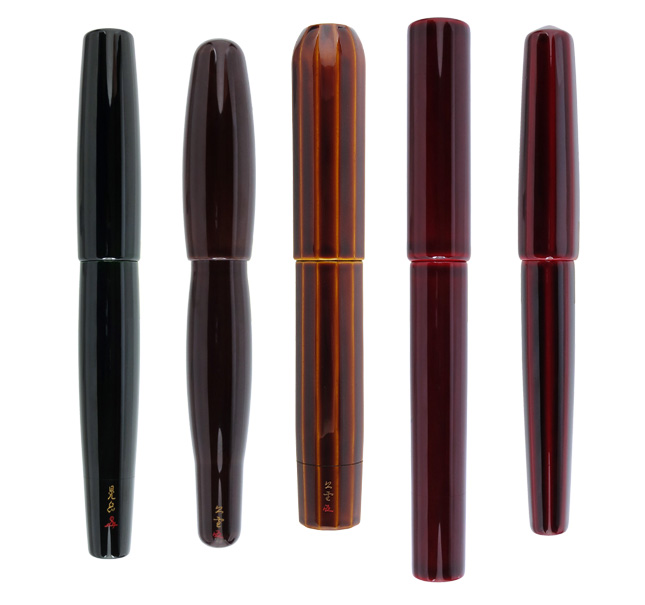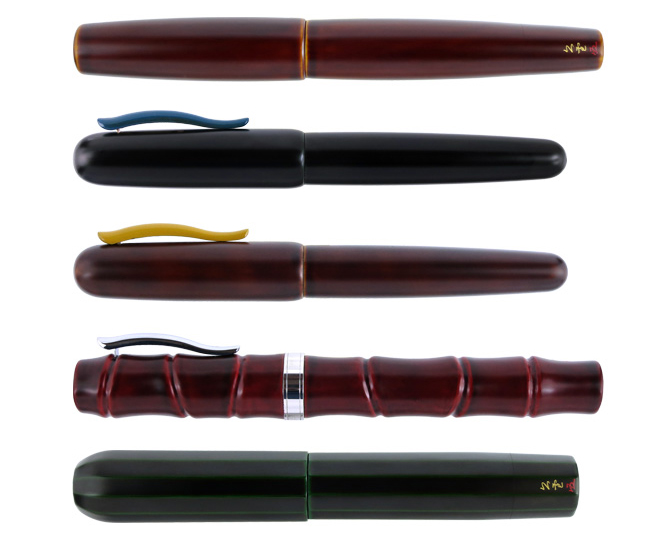Maki‑e pens
Basic Painting
Before it is refined, Urushi is either oiled or non‑oiled. Oiled Urushi is lustrous when painted but cannot be burnished; Non‑oiled Urushi is not initially lustrous but can be burnished to become very lustrous. Shita‑nuri (base paintings) require that Urushi be mixed with polish powders so as to harden the base painting. Naka‑nuri (interim paintings) is then completed to cover the base paintings and to prepare for Uwa‑nuri (final paintings). Roiro‑migaki uses colored Urushi to paint the piece's surface which is then burnished to achieve a lustrous surface.
Hana‑nuri uses Oiled Urushi, which already has a natural luster when dried. Roiro-migaki is shinier than Hana‑nuri, but Hana‑nuri is more popular in Japan, especially with Sa‑doh (Tea Ceremony). Technically Hana‑nuri is simpler than Roiro‑migaki, but it does not allow for any mistakes; once a mistake is made, the work has to start over again. Good Roiro‑migaki doesn’t require any difficult techniques, but it does need good quality domestic Urushi and two additional weeks for the Urushi to dry, as well as careful, repeated burnishing. Our Maki‑e shi Omote says that all good results depend on the craftsman’s sixth sense in these processes.
The relationship between Tame‑nuri and Irokeshidame‑nuri is the same as that between Rioro‑migaki and Irokeshidame‑nuri. The former uses non‑oiled Urushi and the latter uses oiled Urushi; the former requires multiple coats of paint and repeated burnishings, while the latter doesn’t require any burnishing; as a result, the surface is not as shiny as a Tame‑nuri surface.
Remarks:
- The colors for these basic paintings are Kuro (Black), Shu (Red), KI(Blue), Midori (Green), and KI (yellow), but on occasion we do make other colors.
- If a Maki‑e artist has to use a specific color for five days, they have to make that color each day. The color will inevitably come out a bit differently each time.
- If you have any questions about Urushi or Maki‑e, please send us an Email.



| Roiro-migaki | Tame-nuri | Irokeshi-dame | in all colors |
|---|---|---|---|
| RM21 | TA21 | ITK21 | Genkai Pens (ED) |
| RM2E | TA2E | ITK2E | Mikodo Pens (ED) |
| RM7 | TA7 | ITK7 | Bamboo Pens (ED) |
| RM12 | TA12 | ITK12 | 12 faceted Pens (ED) |
| RM25 | TA25 | ITK25 | Sho Genkai Pens (ED) |
| RM10 | TA10 | ITK10 | Densho Pens (ED) |
| RM5 | TA5 | ITK5 | Takumi Pens (c/c) |
| RM88 | TA88 | ITK88 | Hakkaku (Octagon) (c/c) |
| RM88S | TA88S | ITK88S | Sho Hakkaku (c/c) |
| RM8 | TA8 | TK8 | Hyotan (GUURD) (c/c) |
| RM9 | TA9 | N/A | Hanryo |